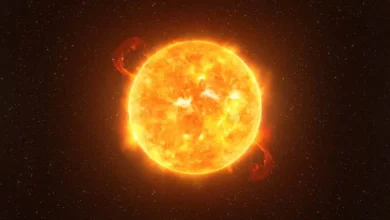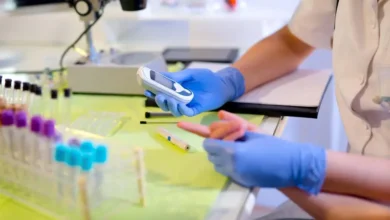Mass die-offs among farmed salmon on the rise around the world
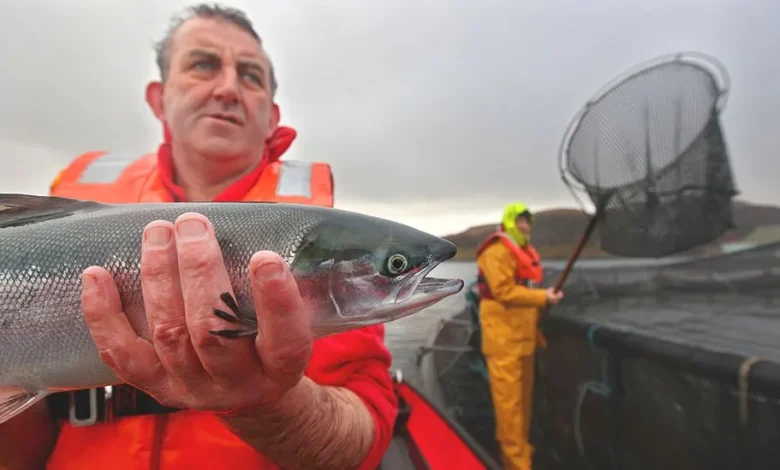
Hundreds of millions of farmed salmon have perished in mass die-offs over the past decade, say researchers.
The scientists say that large-scale mortalities are now happening more frequently and at a larger scale than ever before.
They argue that warmer seas and greater reliance on technology are contributing to the rise in deaths.
This global assessment looked at salmon deaths in some leading producers, including Norway, the UK and Canada.
Salmon farming has come a long way since the fish were first grown commercially in cages in Norway in the 1960s. The industry has expanded rapidly in recent decades, with around 70% of salmon eaten around the world now coming from farms.
But the aquaculture industry has long been controversial – with significant worries over disease among the fish, escapes to the wild and the overall environmental impact of raising them in cages.
Major mortality events, involving the sudden deaths of millions of fish have been well documented, sometimes caused by disease outbreaks but also linked to warmer seas resulting from climate change.
In Scotland last year, government data shows that more than 17 million salmon died, the most ever recorded. Producers blamed hotter oceans for the losses.
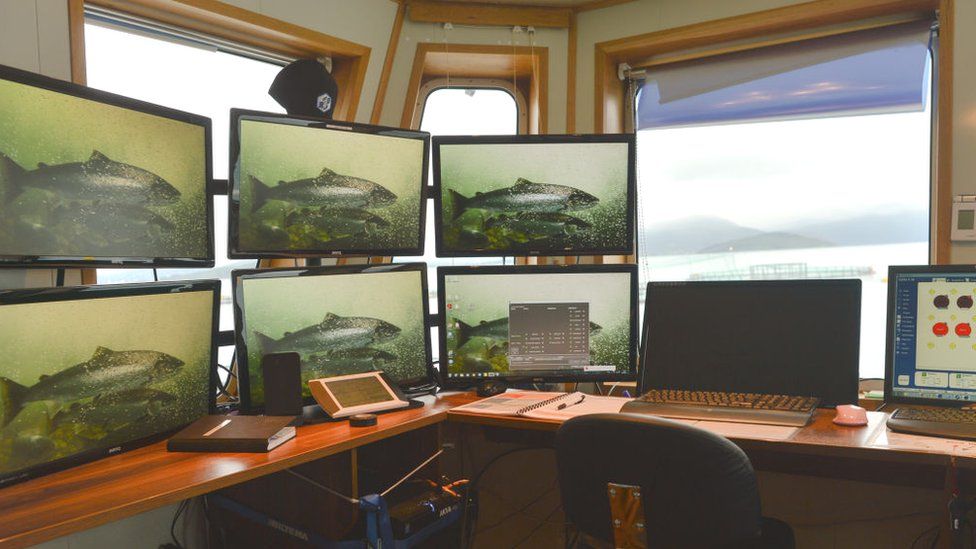
Other countries have experienced even greater mortality. Norway says close to 17% of their farmed fish died suddenly in 2023.
To shed some light on these deaths, researchers looked at data from countries producing 92% of farmed salmon over the past decade.
The scientists found 865 million instances of farmed salmon dying prematurely during this period.
They found that the frequency of the biggest die-offs was rising over time for Norway, Canada and the UK.
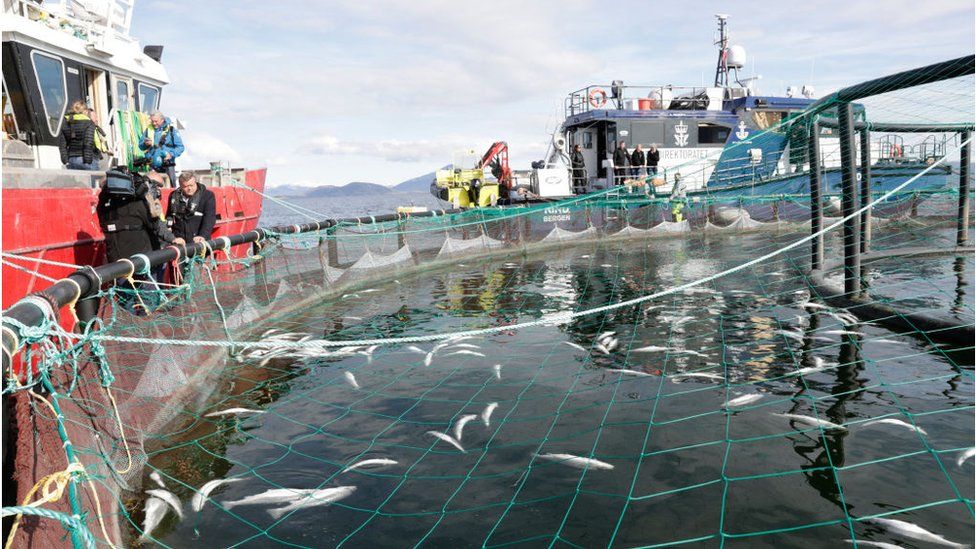
Not only were they increasing in frequency, the authors said, the die-offs were also getting bigger.
The authors estimate that the potential maximum losses for any single mass mortality event are 5.14 million fish in Norway, 5.05 million in Canada and more than one million in the UK.
A warming climate is playing a role say the authors – but so is the growing reliance on technology like underwater cameras and AI.
“An increasingly variable ocean environment, largely from climate change, may mean more production sites will be exposed to these events more often,” said Dr Gerald Singh from the University of Victoria in Canada, the study’s lead author.
“In addition, production practices, and technology that is increasingly pushing production into riskier conditions and allowing for greater production per site may expose larger and larger populations of fish to conditions that cause mortalities.”
The authors say that technology such as remote, real-time monitoring of fish farms can help justify placing them in sites farther offshore.
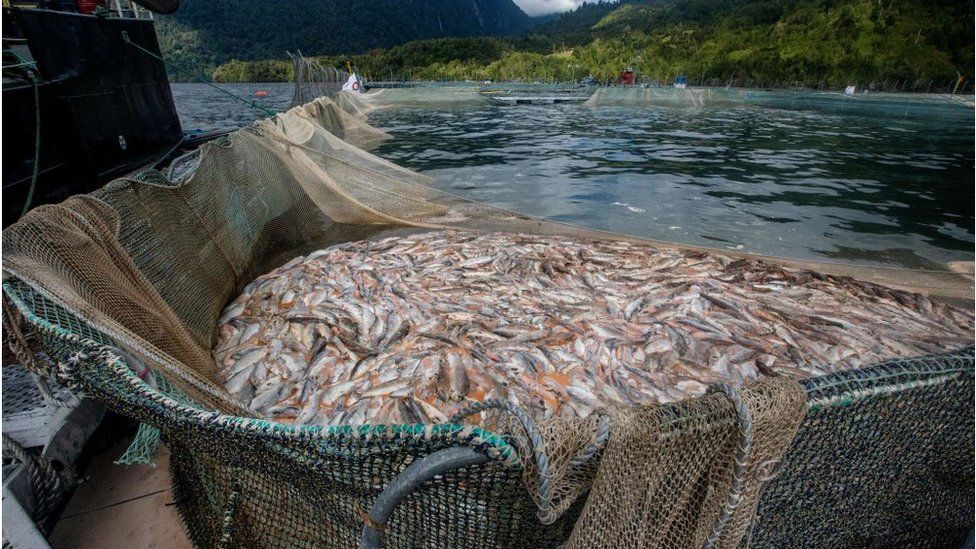
However, being further offshore may increase the threats and reduce the chances of operators spotting them early. So the increased reliance on the technology actually leads to greater risks for the fish.
Campaigners against salmon farming say this new study is “alarming” and underlines the fact that human decisions as well as warmer oceans are playing a role in the discomfort suffered by the fish.
“Mortality is only one of many grave welfare concerns for farmed salmon,” said Kirsty Jenkins, a policy officer at campaigners OneKind.
“They are plagued by sea lice and disease, suffer from stressful handling and treatments, and live a monotonous life in barren, crowded cages.”
“The industry has shown itself to be incapable of, or unwilling to, reform, and it must be questioned if salmon farming has any place in a compassionate and sustainable food system.”
Some experts wonder if the industry can survive the increasing frequency of these mass die-offs in major production centres.
Dr Singh believes that aquaculture will continue globally, but that mass die-offs with huge clean-up costs might threaten future operations in many communities.
“It’s probably unlikely that these events will negate or counter food production at an aggregate global level,” he told BBC News.
“Instead, these events can have considerable local effects, especially considering welfare of coastal communities and for workers.”

